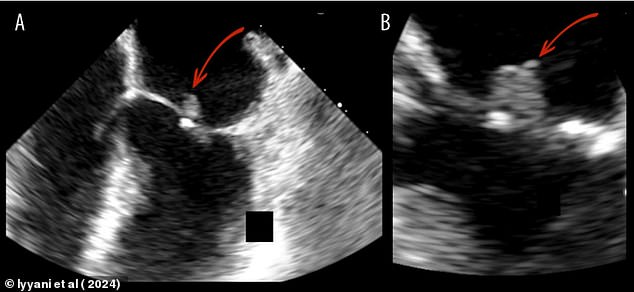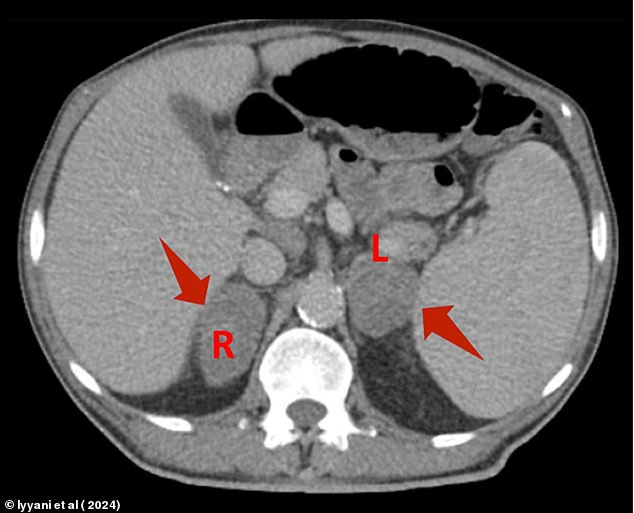Florida Man Who Lost 50 Pounds In A Year Without Ozempic Shocked To Discover Deadly Organism Growing Inside Him





A man who had lost 50 pounds without any effort was told his weight loss was due to a deadly fungus found in bat droppings.
The 61-year-old Florida resident, whose name has not been released, eventually went to the hospital after suffering from night sweats, extreme fatigue and fever for about 10 months.
Tests showed he was infected with the fungus Histoplasma capsulatum. His levels were unusually high – about 25 times the levels that could be detected in a blood test.
The fungus had infected his heart, causing inflammation throughout his body, swelling of his spleen and causing two tumors to grow on his adrenal glands.

The scan above shows damage to an area of the man’s heart called the mitral valve, as indicated by arrows

Above you can see areas in the US that are likely suitable for the fungus histoplasma to live
Doctors wrote A case report states that the man was lucky to be alive: he had diabetes, high blood pressure and an irregular heartbeat.
Severe infection with the fungus is 100 percent fatal if left untreated in people with weakened immune systems. Covid is fatal in less than 0.1 percent of cases.
The Florida patient worked as a construction supervisor and owned a 16-acre ranch where he raised calves.
Doctors wondered how he had become infected: the fungus is uncommon in Florida and is mainly found in the Ohio and Mississippi River valleys.
According to the CDC, these areas are “more suitable” for H. capsulatum to grow due to soil acidity, distance to water, and land cover.
H. capsulatum is a fungus found in bird and bat feces that causes flu-like illness when people inhale its spores. But the man told doctors he had no contact with those animals and had not been outside Florida recently.
However, H. capsulatum can also contaminate soil and survive in the soil for years.
The case report said: ‘The fungus needs an environment that supports its growth. Often these are places with a lot of bird or bat droppings, or under chicken coops.’

Above you can see the estimated areas in the US with histoplasmosis

Above is an image of a body scan of the Florida patient, showing two masses on his adrenal glands as indicated by the arrows
The man required heart surgery to repair the damaged parts of the organ and was prescribed intravenous medication for two weeks.
However, after his surgeries, he developed complications and was admitted to intensive care for six days.
He suffered from anemia due to blood loss and impaired kidney function due to cell damage to the organs.
After the man recovered, he was sent home for “long-term” anti-fungal treatment.
On follow-up visits, he had no further symptoms and the amount of histoplasma in his blood decreased.
Cases of histoplasmosis are not reportable in some states. The exact incidence of the infection is therefore unknown.
In states where the fungus is reported, the infection rate is typically one to two cases per 100,000 people.
After the man became ill, the Department of Health requested soil samples be taken from the man’s farm, “as this remains the primary source of exposure.”
When the case report was published last month, the results were not yet known.




